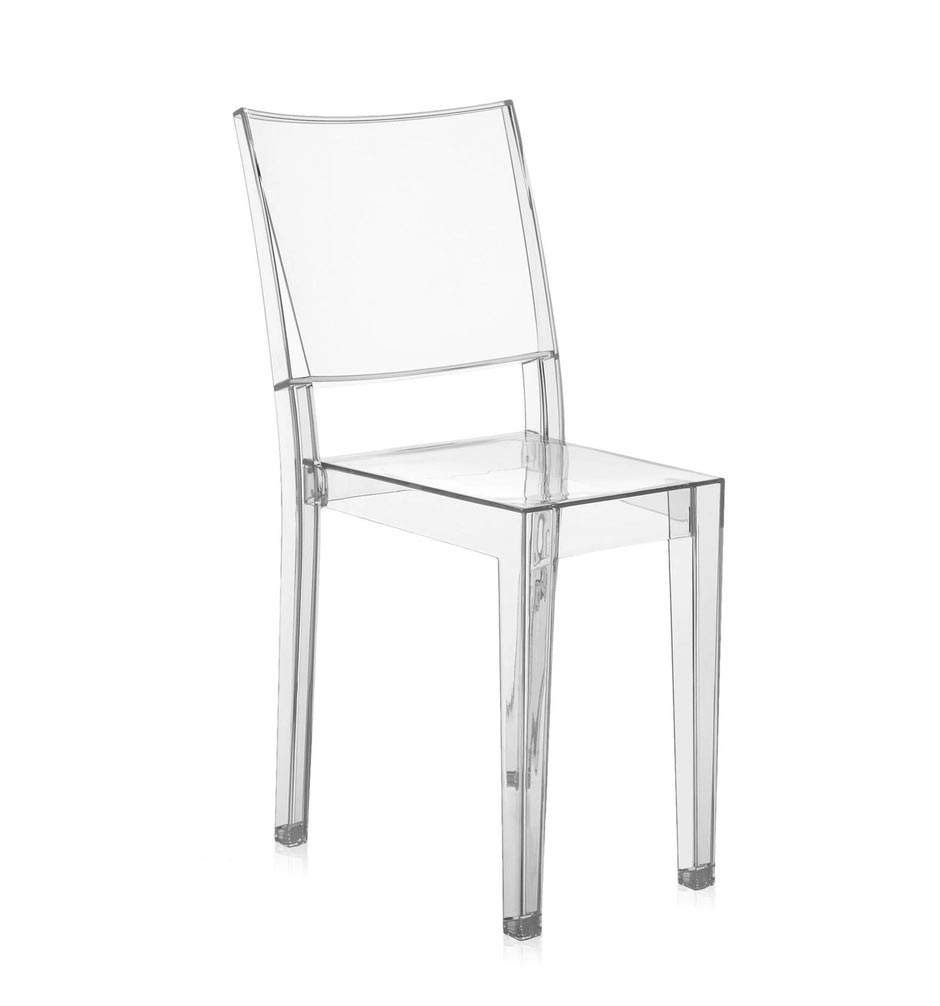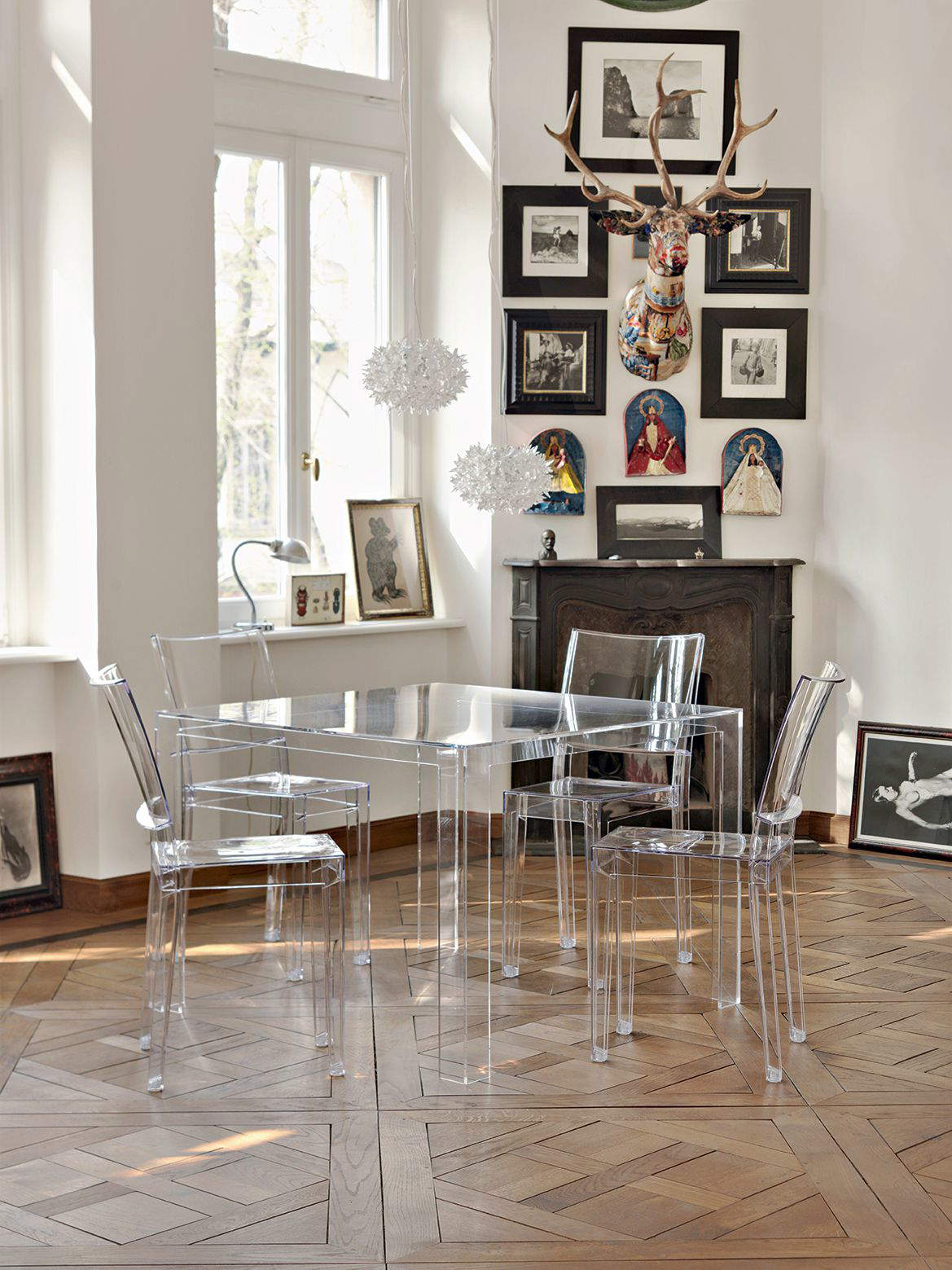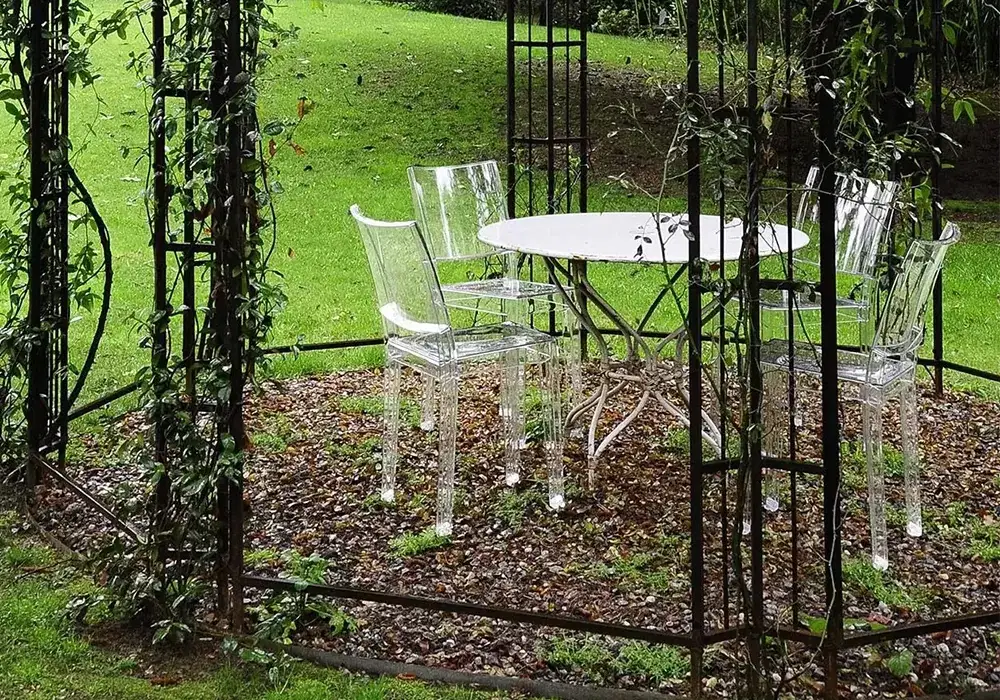Antonella Galli writes, in her book I luoghi del design, that Philippe Starck, with the celebrated La Marie chair made for Kartell, gave “polycarbonate its heroic moment,” with an object that “succeeds in sublimating even the minimalism that reigned in an era when appearing was everything.” The Marie was the world’s first completely transparent chair and its story begins in the late 1990s, specifically in 1998, when Philippe Starck collaborated with the Italian design company Kartell to create a unique and innovative piece. The goal was to make a chair that combined aesthetics, functionality and versatility in one design. In 1999, the chair interest and attention from industry professionals and design enthusiasts: indeed, this object represents an example of innovative and avant-garde design, since Philippe Starck had managed to create a chair capable of defying traditional conventions, combining transparency and lightness in a single piece without sacrificing functionality.
“The idea,” Starck himself explained in an interview with Interni Magazine, “was to reduce my intervention in everything, to radically do ’as little as possible.’ So, to also reduce style, which in this project disappears altogether. The Marie is an expression of what can be produced with a mold, with minimal human and cultural intervention as well as design. The Marie is not designed, but is defined by the flow of fluid plastic in a mold. It also employs the minimum of matter, which we intentionally weighed gram by gram. Even its presence is minimal, because it represents a transparent chair perceptible only on a ’second reading’: to see it, one must make a choice.” A chair that reinterpreted ancient seating but which, with its forms and almost evanescent presence, was to become a kind of archetypal chair. An object out of time that represented everyone. Somewhat like the name it bears, chosen probably because it is a feminine name par excellence.



La Marie was distinguished by its extraordinary transparency, achieved by using polycarbonate as the main material, and is made in a single mold thanks to a special technique developed by Kartell. Polycarbonate is a durable and flexible type of thermoplastic polymer, which allowed for an elegant shape and light appearance, blending in with its surroundings. The chair’s transparency created a unique, almost ethereal visual effect, and its ergonomically contoured shape offered comfort and support for the body. The choice to use polycarbonate was not accidental. In addition to its appealing aesthetics, the material was also extremely resistant to impact and weathering, making the chair solid, sturdy, and suitable for both indoor and outdoor use. Despite its visual lightness, La Marie is in fact surprisingly comfortable. Its ergonomically contoured shape conforms perfectly to the body, providing adequate support for the back and legs. In addition, polycarbonate is a 100 percent recyclable material, and this aspect gives the chair a small ecological footprint.
Thus, Philippe Starck’s chair has become an icon of contemporary design. Its versatility and timeless style allow it to blend harmoniously into a variety of environments, from private homes to public spaces, from restaurants to offices. The Marie went on to receive prestigious awards. It was shown in major design exhibitions around the world and is now part of the permanent collections of internationally renowned museums, starting with MoMA in New York and the Centre Pompidou in Paris. Its presence in these museums has enshrined its artistic and cultural value. And it has since been the basis for other projects: for example, directly descended from La Marie is another famous chair by Starck, the Louis Ghost, also founded on the concepts of lightness and transparency.



La Marie was also produced in three fluorescent colors (violet, light yellow, and light orange), but the most sought-after is undoubtedly the classic crystal version. It is one of the most widely available design products on the market and can be purchased at several physical and online outlets specializing in furniture and home goods. It can be found, meanwhile, at single-brand Kartell retailers, located in many cities around the world and able to offer a wide selection of Kartell products, including the La Marie chair. It can also be found in many designer boutiques and high-end furniture stores, which may have the La Marie chair in their assortment. Still, e-commerce platforms and websites specializing in design may have La Marie in their catalog. Before making a purchase, however, it is advisable to compare prices and read product and dealer reviews to ensure that you are getting reliable and authentic service.
Over the years, La Marie has continued to enjoy success and popularity, becoming an icon of Italian design and a symbol of innovation in the industry. Its elegant form, transparency, and versatility have made it an object of desire for design lovers and collectors worldwide. A chair that has proven to stand the test of time, maintaining its relevance and appeal even more than two decades after its introduction to the market. Its story is a testament to Philippe Starck’s creativity and vision, as well as Kartell’s ability to combine aesthetics and functionality in a single object.
Warning: the translation into English of the original Italian article was created using automatic tools. We undertake to review all articles, but we do not guarantee the total absence of inaccuracies in the translation due to the program. You can find the original by clicking on the ITA button. If you find any mistake,please contact us.